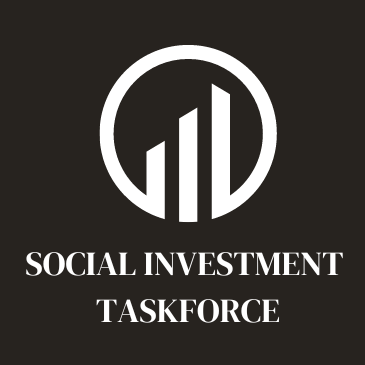Picture this situation. You’re in a board meeting where your latest impact investing project shows amazing community results. Environmental impact numbers beat all expectations, too. But when stakeholders ask for concrete social media roi figures, you scramble for clear answers just like many other investment professionals.
Likewise, banks that focus on social and environmental impact face this same challenge every day. The solution requires measurement systems that work as effectively for social media performance as they do for traditional profits.
Our guide shows you exactly how to build these systems. We’ll use proven social media analytics frameworks and impact measurement tools that fit your business goals. Let’s shape your impact story into measurable success.
Understanding Social ROI Metrics for Real Results
Many banks focus only on financial KPIs, but that view captures just half of the story because it ignores the wider impact. Real success comes from measuring both profit and social change, and the next sections show how to bring them together.

Financial Returns vs Social Returns
When most people hear “ROI,” they think about money earned over time. Simple enough, right? But focusing only on dollars leaves part of the story untold. That’s where social return on investment (SROI) comes in. It shows how investments improve lives and communities alongside profits.
Imagine a $2 million housing project that not only earns 8% annually but also houses 200 families and reduces homelessness. In cases like this, the gain isn’t just financial. It’s social too. That’s why real success is judged by both numbers and impact.
Outcome-Based Measurement Tools
Knowing you need to track social results is one thing, but how do you do it consistently? IRIS offers a clear answer to that challenge. This tool helps investors measure both profits and positive change, using a standardized framework. Because of its clear approach, thousands of organizations worldwide already rely on it.
The Global Impact Investing Network even endorses IRIS as the industry standard. A common standard brings clarity to comparisons, efficiency to collaboration, and reliability to decision-making. This consistency gives investors confidence and helps the industry move forward together.
Stakeholder Impact Assessment
Numbers tell one story, but people’s voices tell another. Just like reading customer reviews before buying something, investors learn the most by listening to communities that experience the changes directly. And when families say they’re thriving, children are staying in school, and the environment is improving, that’s when the real picture comes into focus.
These stories give meaning to data and highlight how investments shape lives in practice. The lesson is clear: you need both the hard numbers and the human feedback. Together, they give the clearest map of impact, like using GPS along with advice from a trusted local guide.
How to Measure Impact Investments Using Data-Driven Approaches
Once you’ve chosen your metrics, the next step is collecting data in a structured way. Keep reading to learn the steps.

- Step 1: Baseline Establishment
So, where do you start from? Well, begin by documenting your current social media metrics and environmental impact levels, because that baseline will guide smarter investments. Use Google Analytics and social media analytics tools to capture website traffic, engagement rates, and customer lifetime value data. - Step 2: Data Collection Systems
Begin by setting up automated reporting tools that connect directly to your social media platforms and investment databases. Once you have these connections established, install Meta Business Suite and similar analytics tools to handle the data extraction.
After configuration, these tools will automatically pull performance data from each platform and create data feeds that flow into a central dashboard. From this central location, you can monitor engagement, conversions, ROI, and environmental benefits without manual data entry. - Step 3: Analysis and Benchmarking
Our analysis shows that impact investors who benchmark regularly see 23% better portfolio performance. To get this advantage, compare your impact investments against industry standards from the global impact investing network. Then track key metrics like customer retention, lead generation, and social media success rates to see where you stand. - Step 4: Reporting and Stakeholder Communication
Now bring it all together. When your CEO asks, “Are these investments working?” The answer should be clear reports that show both social media ROI and environmental impact. By connecting these results to business goals, you make the value impossible to ignore.
Now let’s examine the analytics tools that make implementation possible.
Finding the Right Tools to Track Social Performance
Some tools can bring unbelievable advantages when starting with social media analytics for impact investing. The market offers many options, but a few prove especially reliable and effective.
Here are the essential tools our team uses:
- Analytics platforms: Think of these like smart dashboards for your car, giving you a clear view while you drive. That is exactly what tools like UpMetrics and Salesforce do. They automatically collect and organise your impact data, tracking how many people you are helping, what changes are happening in communities, and how audiences respond across platforms.
- Survey systems: Feedback is a powerful signal, but raw opinions only go so far. That’s why tools like SurveyMonkey step in to gather structured insights on environmental benefits. When paired with analytics, surveys provide a more complete view of performance, showing both social media impact and long-term customer value.
- Visualization software: Can you imagine trying to understand a story written entirely in numbers and spreadsheets? Microsoft Power BI and Tableau solve this problem by creating easy-to-understand charts, graphs, and reports. Instead of staring at confusing data, you get clear pictures that show your social and environmental impact.
- Verification services: Organizations like B Analytics provide independent validation of impact investing claims. They verify environmental impact data and social media performance metrics to prove ROI to asset owners.
Our team found that combining three tool categories provides optimal results for tracking impact investments effectively.
How Impact Measurement Frameworks Work
Now comes the exciting part. You’ve learned what to measure, how to collect data, and which tools to use. Time to put it all together into a system that actually works.

Think of your framework like building a house that needs five essential pieces. Connect your impact goals with business goals, map out who cares about your results, set up automatic data collection using social media analytics tools, schedule regular reviews of your engagement rates, and create simple ways to share your results. When these pieces work together, you get a framework that grows stronger over time.
The best part happens next: you’ll have a system that proves your impact to anyone who asks. Your reports will tell clear stories about how social efforts create real business value. No more scrambling for answers when stakeholders want to see results.
Start Measuring Social Impact Like Financial Returns
Impact investing creates tremendous value, but measuring that value often feels impossible without proper systems. However, social media ROI and environmental impact can be tracked as precisely as traditional financial metrics when you use proven frameworks and tools.
That’s exactly what this guide provided. We explored social ROI metrics that distinguish successful investments, IRIS measurement tools for consistent tracking, stakeholder assessment methods for authentic feedback, four-step data collection systems, essential analytics platforms, and comprehensive frameworks that transform impact investing strategies into measurable results.
Ready to track impact with confidence? Contact Social Investment Taskforce today to access proven systems that strengthen portfolios, win stakeholder trust, and demonstrate measurable social and financial value. Your impact deserves recognition, and we can help you achieve it.


